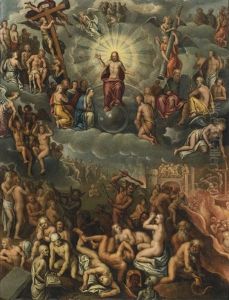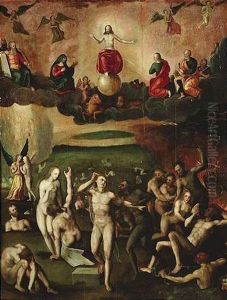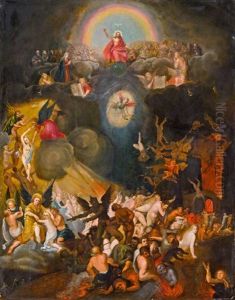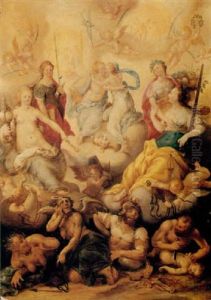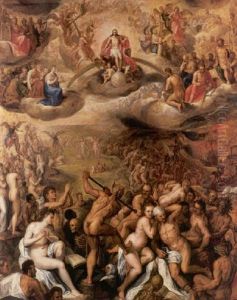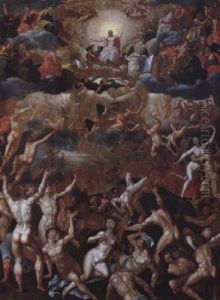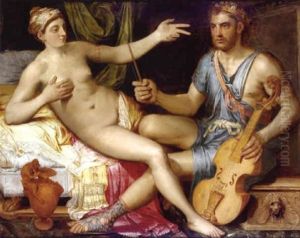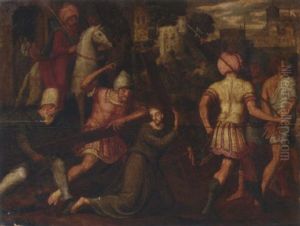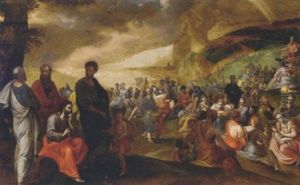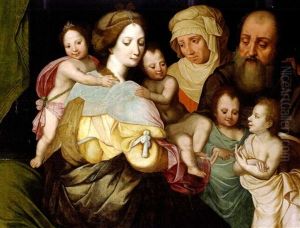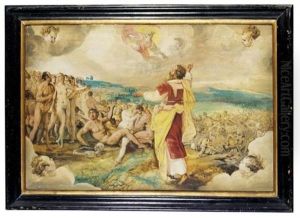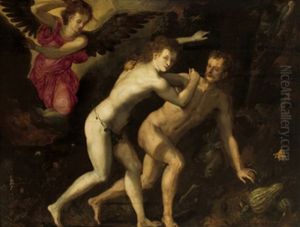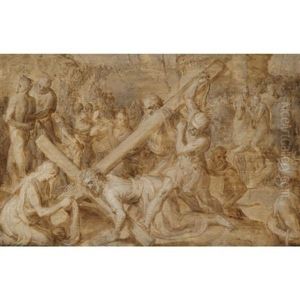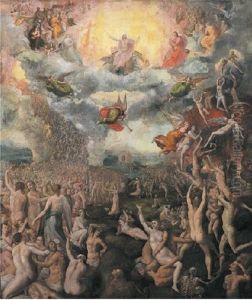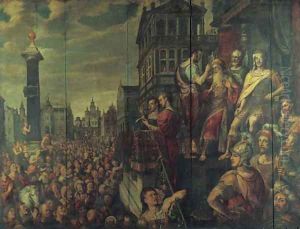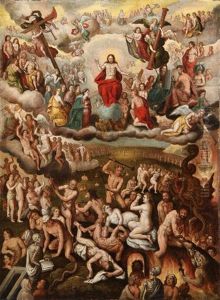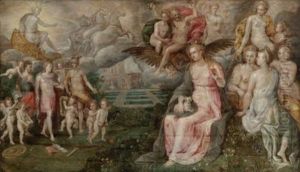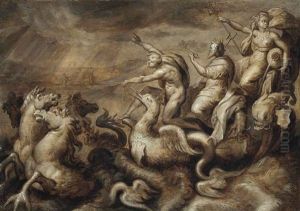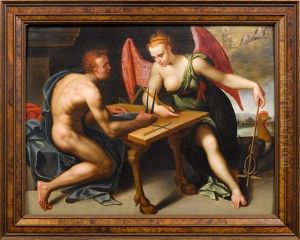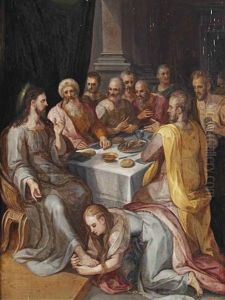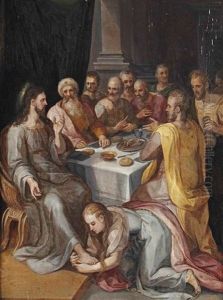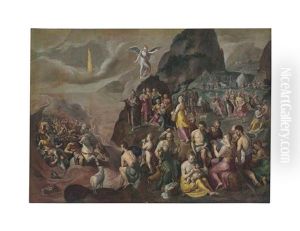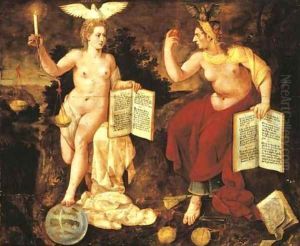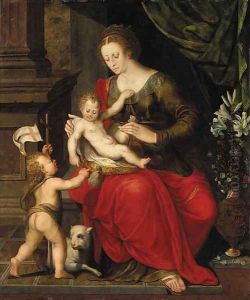Crispin Van Den Broeck Paintings
Crispin van den Broeck, born in Mechelen in 1524, was a prominent figure in the Northern Renaissance, particularly within the Flemish school of painting and engraving. His life and career were deeply rooted in the artistic traditions of the Low Countries, a region known for its innovative approach to art during the 16th century. Van den Broeck's contributions, though perhaps not as widely recognized as those of his contemporaries like Pieter Bruegel the Elder, nonetheless played a significant role in the evolution of Flemish art.
Van den Broeck was part of an artistic family, with both his father and brother being painters, which provided him an early immersion into the world of art. His early years were spent in Mechelen, but like many artists of his time, Van den Broeck's career took him to different cities, notably Antwerp, which was a bustling hub for artists, merchants, and scholars during the Renaissance. In Antwerp, he became a master in the Guild of St. Luke by 1555, a testament to his skill and reputation among his peers.
His body of work includes religious themes, portraits, and mythological scenes, executed with a detailed and precise style. Van den Broeck was also known for his engravings, which contributed to the spread of the Renaissance ideals and aesthetics beyond the borders of the Low Countries. His work in designing tapestries is noted for its complexity and vibrancy, showcasing his versatility as an artist.
Despite his achievements, much of Van den Broeck's life and work have been overshadowed by the more dominant figures of the Renaissance. However, his contributions to the Flemish art scene, particularly in the area of engraving and tapestry design, remain important. His art reflects the transitional period of the 16th century, melding the medieval traditions of the Low Countries with the emerging Renaissance spirit of humanism, exploration, and individual expression.
Crispin van den Broeck passed away in 1591, leaving behind a legacy that, while not as celebrated as some of his contemporaries, is integral to the understanding of Flemish art during the Renaissance. His works continue to be studied for their technique and historical value, offering insight into the rich cultural tapestry of 16th-century Europe.
